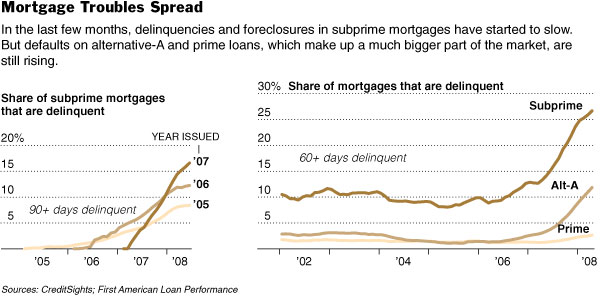| Want to send this page or a link to a friend? Click on mail at the top of this window. |
More Special Reports |
| Posted August 5, 2008 |
| Business |
| HOUSING LENDERS FEAR BIGGER | |
| WAVE OF LOAN DEFAULTS | |
| _________________ | |
|
|
|
| MISSED PAYMENTS RISE | |
| _________________ | |
|
|
|
| Economic Ills Take Toll on Higher | |
| Grades of Mortgages | |
|
________________ |
|
|
|
|
| By VIKAS BAJAJ |
 |
| ____________ | |
|
|
|
| Tight credit and overvalued homes squeeze borrowers. | |
| ____________ |
| Wehaitians.com, the scholarly journal of democracy and human rights |
| More from wehaitians.com |